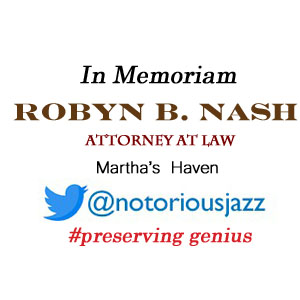
Daily Dose Of Jazz…
Denys Justin Wright, known professionally as Denny Wright, was born on May 6, 1924 in Deptford, London, England. He grew up in Brockley with frequent forays to the Old Kent Road and the Elephant and Castle. His first instrument was the piano. His older brother was a semi-professional guitarist and soon he was trying to play his brother’s guitar. He began playing professionally before the Second World War, while at school.
A session musician for many years, he frequently acted as arranger and fixer for recording sessions. As a prolific jazz and orchestra composer Wright led many bands, from small ensembles and night club bands to orchestras. He worked with Latin American and Jamaican bands, Afro-Cubists and the Decca Records house band.
In the Forties Wright played in jazz clubs in the West End of London, doing session work, performed in bands on radio shows, and medically unfit to serve due to a childhood injury, he entertained the troops. In 1945 he started the first bebop club in London.
He went on to form several bands, tour the Soviet Union, and continued his work as a session musician, producing Tribute To The Hot Club as The Cooper-Wright Quintet. Denny gave private lessons and at London comprehensive schools, and he lectured at the Royal College of Music on the life of a session musician.
During his career he worked with Stéphane Grappelli, Lonnie Donegan, Johnny Duncan, Digby Fairweather, Ella Fitzgerald, Ken Snakehips Johnson, Billy Eckstine, Fapy Lafertin, Russ Conway, Biréli Lagrène, Humphrey Lyttelton, Marie Bryant, Nigel Kennedy, and George Shearing.
Guitarist and pianist Denny Wright, who was voted the 1980 BBC Jazz Society Musician of the Year, died on February 8, 1992.
More Posts: bandleader,guita,history,instrumental,jazz,music,piano
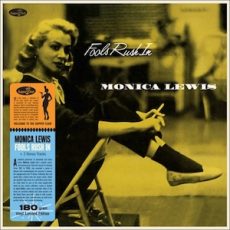
Daily Dose Of Jazz…
Monica Lewis was born May Lewis in Chicago, Illinois on May 5, 1922, the youngest of three children. Her father was a pianist, composer and musical director for CBS, while her mother was a singer with the Chicago Opera Company. She studied voice with her mother and when she was eleven the family moved to New York City due to The Great Depression.
She began singing on radio after a successful audition with WMCA in New York City, which led to her own program. At age seventeen she started working as a singer for a radio show titled Gloom Dodgers in order to support her family while studying at Hunter College. Shortly afterwards Lewis had a radio show titled Monica Makes Music and went on to co-star on The Chesterfield Supper Club radio show.
Winning a part as a singing cigarette girl in the Broadway show Johnny 2X4, her work on Broadway led to performing at the Stork Club. She dropped out of school, changed her name from May to Monica because she thought it was sexier. In 1943 at an audition in Times Square with hundreds of women participating, she earned the part as a singer.
She started singing on Hotel Astor’s roof with Goodman’s orchestra and established her career through nationally broadcast shows. Lewis went on to record for Signature Records, MGM Records, Decca Records, Capitol Records, and Verve Records.
She went on to sing in commercials, became the voice of Miss Chiquita Banana, and appeared on the Toast of the Town which would become the Ed Sullivan Show. It was created and produced by her brother Marlo Lewis.
By 1950 she was signed to a contract with MGM and movies were added to her trades. Over the next three decades she appeared in romantic comedies and disaster films along with television action, crime and western series. Resuming her singing career in the 1980’s and 1990s, she performed at popular clubs in Los Angeles and New York City.
Vocalist Monica Lewis died ten days after an interview with The New Yorker, on June 12, 2015. The article was posthumously published in the September 7, 2015 edition.
More Posts: bandleader,history,instrumental,jazz,music,vocal
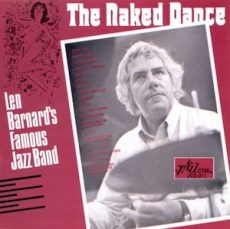
Daily Dose Of Jazz…
Leonard Arthur Barnard was born on April 23, 1929 in Melbourne, Victoria, Australia. Before forming his own traditional jazz band in the late 40s he played drums in the family band. This band, one of the earliest Australian groups to make jazz records, was so popular that it remained active for more than two decades.
During this same period Barnard played with other groups ranging from jazz to dance music. He gigged and recorded with Ade Monsbourgh and Dave Dallwitz. In the early 1970s his relocation to Sydney, Australia saw him playing with many of the country’s leading musicians including Errol Buddle and John Sangster. Then he joined Galapagos Duck, a band led by Tom Hare.
On occasion Len played with bands led by his younger brother, Bob Barnard. By the late 90s he remained active playing and recording with a variety of artists including Janet Seidel. His playing and able use of brushes made him an accomplished mainstream drummer.
Drummer Len Barnard, whose playing was forceful yet had a discreet and propulsive swing, died on November 5, 2005 in Sydney.
More Posts: bandleader,drums,history,instrumental,jazz,music
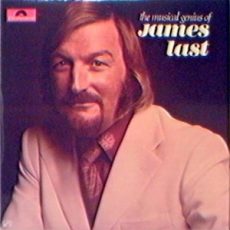
Daily Dose Of Jazz…
James Last was born Hans Last on April 17, 1929 in Bremen, Germany. He grew up in the suburb of Sebaldsbrück and began studying the piano at ageten, although he could play simple tunes when he was nine. He switched to the double bass as a teenager and entered the Bückeburg Military Music School of the German Wehrmacht at the age of fourteen and continued learning to play bass, piano and tuba.
After the end of World War II he joined Hans Günther Oesterreich’s Radio Bremen Dance Orchestra. In 1948 he became the leader of the Last-Becker Ensemble, which performed for seven years. He was voted as the best bassist in the country in a German jazz poll for 1950, 1951 and 1952. When they disbanded, he became the in-house arranger for Polydor Records, as well as a number of European radio stations. During the next decade he helped arrange hits for artists such as Helmut Zacharias, Freddy Quinn, Lolita, Alfred Hause and Caterina Valente.
He won numerous popular and professional awards, including Billboard magazine’s Star of the Year trophy in 1976, and was honoured for lifetime achievement with the German ECHO prize in 1994. In addition, Last sold an estimated 200 million records worldwide in his lifetime of which 80 million were sold by 1973 and won numerous awards including 200 gold and 14 platinum discs in Germany.
In February 2015, after almost 50 years on tour he announced that he was finally bidding adieu to the stage and the last concert of his farewell tour took place in Lanxess Arena in Cologne on April 26, 2015. Composer, bassist and big band leader of the James Last Orchestra, wose “happy music” made him a bestseller in Germany, died on June 9, 2015 in Florida at the age of 86.
More Posts: bandleader,bass,composer,history,instrumental,jazz,music
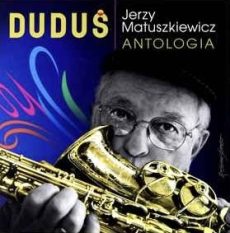
Daily Dose Of Jazz…
Jerzy “Duduś” Matuszkiewicz was born on April 10, 1928 in Jasło, Poland and began playing jazz as a youth. He founded a jazz club at the YMCA in Kraków, Poland at age 20. and played with the orchestra of Kazimierz Turewicz.
A music enthusiasts club, Melomani, was founded in 1947 at the Łódź YMCA, a hang-out of nonconformist thinkers during the late 1940s. Moving to Łódź, Poland to study at the new Łódź Film School, he became part of the club and joined the sessions. After only a few concerts, the YMCA was closed due to promoting imperialist ideology using jazz music.
Jerzy founded and led a band in 1950, playing saxophones and clarinet with Marek Szczerbiński-Sart, trumpeter Andrzej “Idon” Wojciechowski, drummer Witold “Dentox” Sobociński, Marian and Tadeusz Suchocki and pianist Andrzej Trzaskowski and bassist Witold Kujawsk. Being separated from Western jazz by the Stalinist regime, they played a repertoire that did not compare to Western standards.
The band was offered space to practise at the Film School, performed informal concerts at the Film School, as well as in bars and private events, once a week. When they received an invitation to play a concert in Warsaw, Poland at the Academy of Fine Arts, they named themselves Melomani.
In 1952, pianist Krzysztof Komeda joined the band and expanded their performance reach. They played at the first jazz festival in Sopot, Poland in 1956. 1958 saw them as the first Polish jazz band invited to perform at the National Philharmonic in Warsaw. The group disbanded that same year.
Until 1964 he performed both in Poland and abroad. The following year he began to mainly compose and conduct music for movies and commercials. Moving to Warsaw with his wife, Grażyna, saxophonist, pianist, composer and bandleader Jerzy Matuszkiewicz died on July 31, 2021 at 93.
More Posts: composer,history,instrumental,jazz,music,piano,saxophone



